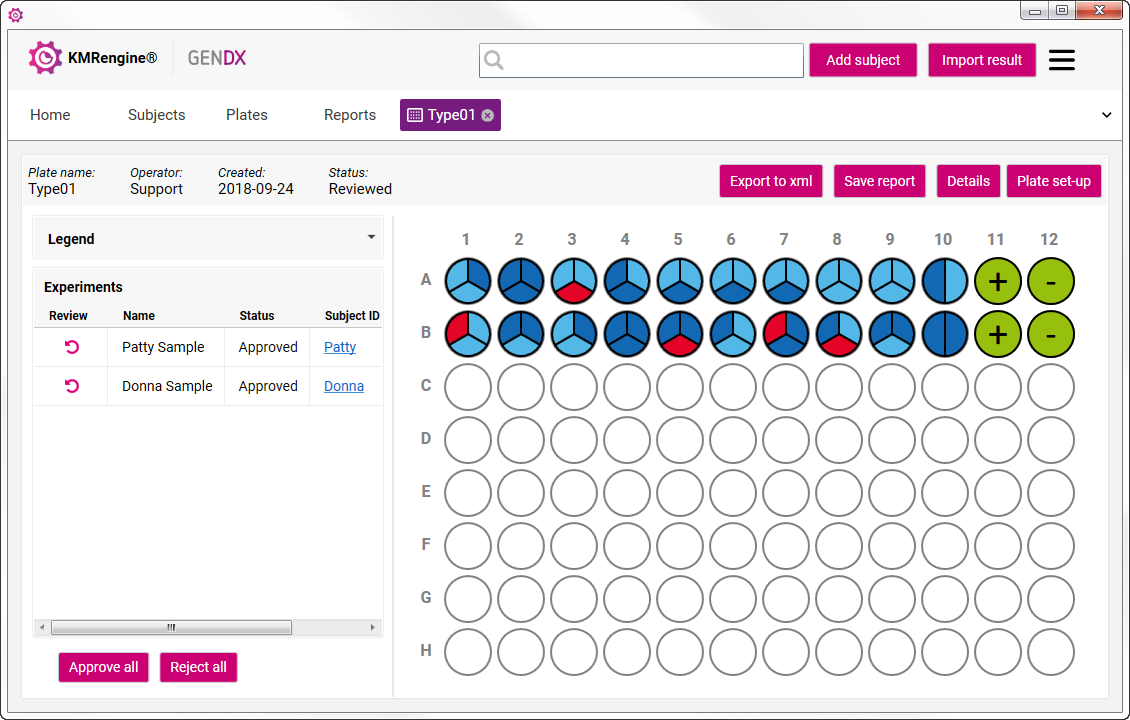Data Analysis
- After the qPCR run, export the results as a .txt or .csv file. When using the Viia7 or Quant Studio it is important to export the results only.
- In KMRengine, click "Import results" to import the qPCR data. Select the correct file.
- KMRengine will perform quality analysis on the data and present the data in the plate view.

- There are three quality scores given to genotyping data: 1) positive, 2) negative and 3) atypical. These values are represented in the plate image by three different colors
 :
:
- Dark blue: data scored as truly positive.
- Light blue: data scored as truly negative.
- Red: data scored as atypical. Atypical assay results will exclude the assay from being considered as a potential informative assay for all samples grouped in the analysis.
- The control samples of the recipient (+) and the donor (-) are shown in green when the result is valid.
- The sections in the trisected well represent the data from the three qPCR reactions in that well. The three sections of the well are labeled clockwise.
- The upper right section is the first result, the bottom section is the second result and the upper left section is the third result reported from the well.
- Review the data and approve or reject the result:
 Approve the result for this sample
Approve the result for this sample
 Reject the result for this sample
Reject the result for this sample
 Undo review
Undo review
Via the "Approve all" or "Reject all" buttons, all samples can be approved or rejected simultaneously.
- Click "Save Report" to obtain the genotyping report.
- Click "Export to xml" to export an xml file for this experiment.
- The report displays which markers are positive or negative for the donor(s) and recipient, and which markers are informative.
